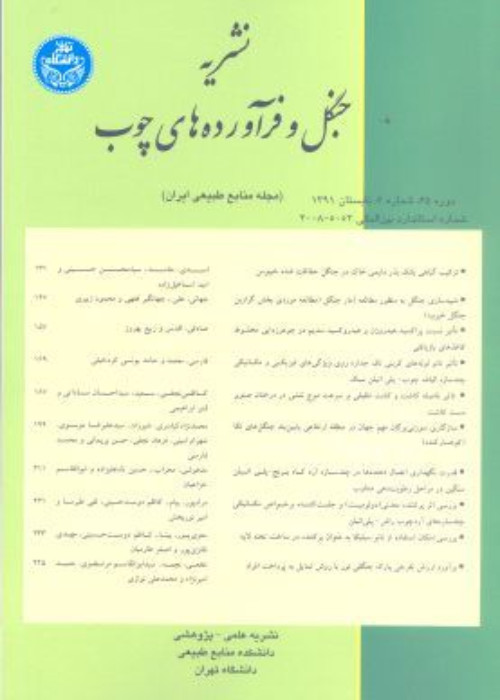The effect of Seed origin and inoculation with arbuscular mycorrhizal fungi on growth and physiological traits of hazelnut seedlings in Fandoglou area
One of the main reasons for the failure of planting projects with hazelnut is climate change and subsequent drought stress in the early years of growth. The aim of this study was to rehabilitate and develop degraded hazelnut forest stands in rainfed conditions in Ardabil hazelnut forest. For this purpose, in early May 2016 in Ardabil hazelnut nursery, new hazelnut potted seedlings produced from three seed sources including Fandoglou (Ardabil Fandoglou forest), Makeh (Aghvalar Gilan forest) and Makidi (Arasbaran forest) were inoculated with fungi Rhizophagus irregularis as well as Mycoroot (containing arbuscular mycorrhizal fungus Glomus mosseae, G. etunicatum and Rhizophagus irregularis). Then, in April 2017, uniform annual hazelnut seedlings were transferred to the lands to Fandoglou forest (area 6075 m2) and were tested in factorial arrangement in a randomized complete block design with three replications of 25 in dryland conditions. The results after four years showed that mycorrhizal seedlings, produced from seeds of all three origins, had larger sizes in most of the studied traits than control seedlings. The highest root colonization of seedlings (51.9%), as well as the largest sizes of most of the measured variables belonged to seedlings of Fandoglou origin inoculated with R. irregularis. Survival, collar diameter growth, height growth, photosynthesis rate, stomatal conductance, water consumption efficiency, and chlorophyll content, respectively, increased by 52.7%, 82.1%, 58.9%, 102%, 152.2%, 272.9%, and 63.6% compared with the control (non-mycorrhizal seedlings of Fandoglou origin). Considering the satisfactory symbiosis of hazelnut seedlings with mycorrhizal fungi, for the production of hazelnut seedlings in Fandoglou forest nursery and its planting in degraded areas of this region, seedlings produced from the origin of Fandoglou seeds coexisted with the R. irregularis is preferred to seedlings with the origin of Makeh and Makidi inoculated with Myco root.
- حق عضویت دریافتی صرف حمایت از نشریات عضو و نگهداری، تکمیل و توسعه مگیران میشود.
- پرداخت حق اشتراک و دانلود مقالات اجازه بازنشر آن در سایر رسانههای چاپی و دیجیتال را به کاربر نمیدهد.



